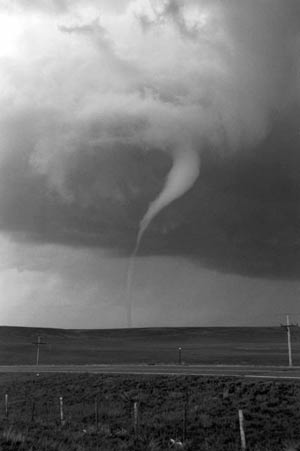|
|
 |
|
The topic wind can also be dealt with in different subjects in school.
The following worksheets will give you new ideas:
Wind in language lessons:
1. Blown by the wind – Hurricanes
In north and Central America whirl storms are called hurricanes; in Mauritius they are called Mauritius hurricanes, in Southeast Asia typhoons, in India Bengalese cyclones and in Australia Willy-Willy.
Since 1950 the storms are interchangeably named female and male.
|
 |
 |
|
A storm appears (image courtesy: Hermera - Big box of art)
|
Formation of a hurricane
In summertime there is the rain period in Western Africa.
Warm humid air rises, condenses and huge thunder clouds turn up.
These thunder cells are pulled by easterly sea- and airstreams (North equatorial stream) towards the Caribbean.
At their journey they get stronger and stronger and almost reach the strength of a storm. The air pressure enormously lowers – more and more air, which is warmed up rises.
|
Tracks of hurricanes
With the Caribbean and Gulf Stream the hurricane moves through the Gulf of Mexico. Depending on the track either the Caribbean islands, Mexico, the Southern states of the US or the east coast up to New York may be affected.
When the hurricanes reach the coast line they hit it with very strong power and often push huge flood wave in front of them.
|
 |
 |
 |
|
Wind blowing strongly, courtesy: Hermera - Big box of art
|
|
|
Floodlike rainfall and tornados are normal side effects.
When the hurricanes reach the land they quickly loose their strength and change into a normal low pressure area.
Each hurricane has a wind still eye, which often makes the people believe that the storm is over and they start tidying up – a fatal mistake! After the eye of the hurricane has passed, the storm turns up again, now with the opposite direction of wind.
|
 |
 |
|
Clipart of a hurrican, courtesy: Hemera - Big box of art
|
|
 |
Hurricanes also loose their strength when they meet colder water, like the Labrador stream.
Finally they cross the Atlantic with the Gulf Stream as a normal low pressure area towards Europe without causing great damages. |
Exercise:
You certainly have made your own experiences with strong storms.
Write down your own storm essay.
|
2. Tornados
Definition:
Tornados are huge wind hoses, which are also called dust devils. They may also turn up above the sea; then they are called water hoses.
Although tornadoes occur throughout the world, including India and Bangladesh, they are most intense and devastating in the United States. |
Tornado Alley
Tornadoes are common in Tornado Alley, an area in the middle west of USA from the Rocky Mountains to the west and the Gulf of Mexico to the south.
In spring a strong westerly jet stream flows across the Alley, creating instability and a trough of low pressure that draws warm, moist air in from the Gulf.
Dry cool air from the Rockies comes together with warm and humid air from the Gulf of Mexico.
The warm air rises and huge thunderclouds are built up.
Now a whirlwind starts. And that's exactly what happens in Tornado Alley.
More than 800 tornados blow through this area each year.
|
 |
 |
 |
|
Tornado Alley, picture by Hemera - Big box of art
|
|
|
Power of destruction
Out of the thundercloud a big suction spout like a huge vacuum cleaner appears, which lifts up everything that comes into its way.
|
 |
 |
|
Devastated area, courtesy: Hemera - Big box of art
|
|
 |
This beak can also lift trucks and catapult them through the air.
Houses burst by this negative pressure when a tornado appears.
Eye witnesses, who could hide themselves below bridges report about a noise similar to a freight train passing. |
 |
 |
|
Devastated area2, courtesy: Hemera - Big box of art
|
|
 |
The only places where you are in safety are closed inner rooms like bathrooms or toilets in the middle of a building.
Even better are protection cellars. |
Exercise:
Write a technical report
1. Where can you find the so called Tornado Alley?
2. Where do tornados occur quite often?
3. At which time of the day do tornados normally turn up?
4. How does a tornado build up?
The following link shows you, how to produce your own little tornado online:
www.whyfiles.org/013tornado/6.html
|
About this page:
- Author: - G. Bauer, B. Wohlhöfer - University of Nürnberg - Germany
- scientific reviewing:
- educational reviewing: Dr. Schrettenbrunner / Dr. Schleicher / J. Heres
- last update: 09.09.03
|
|
 |
|









